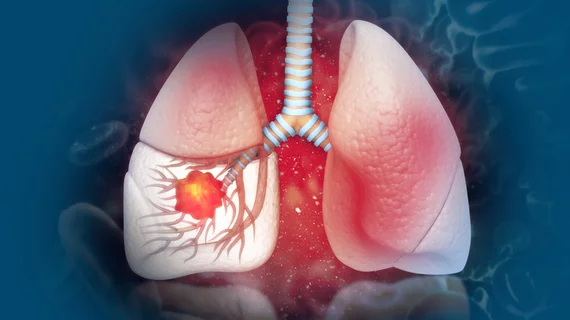USPSTF updates lung cancer screening guidance, with millions more now qualified for exams
The U.S. Preventative Services Task Force has released updated lung cancer screening recommendations that nearly double the number of people eligible for tests.
In a recommendation statement published Tuesday in JAMA, the USPSTF said individuals should begin low-dose CT screening five years earlier than its 2013 guidance, lowering the starting age from 55 to 50. The group also expanded its high-risk population to include those who smoked the equivalent of a pack of cigarettes a day for 20 years, rather than a 30 pack-year history.
This 2021 change, first proposed last July, applies to adults between 50 and 80 years who currently smoke or have quit within the past 15 years. It means approximately 14.5 million U.S. adults will be eligible for lung cancer screening, an 81% jump from the 2013 recommendations.
The task force has given this guidance a “B” rating, meaning there is a high certainty the net benefit is moderate or substantial and practices should offer and provide the service.
The American College of Radiology, which has advocated for expanded LDCT guidelines, quickly weighed in on the news, encouraging providers to discuss the new information with their patients.
“Lung cancer kills more people each year than breast, colon and prostate cancers combined,” Debra Dyer, MD, chair of the ACR Lung Cancer Screening Steering Committee, said in a statement. “Particularly with the expanded screening thresholds implemented nationwide, this cost-effective test can save more lives than any cancer screening test in history.”
The USPSTF reviewed 220 lung cancer screening studies for their update, including modeling to determine the best age to start low-dose screening. African Americans and women are both expected to benefit from the new guidance. Each group smokes fewer cigarettes than white men yet faces higher lung cancer risks.
In another response published Monday in JAMA, University of North Carolina at Chapel Hill physicians called the new recommendations a “leap forward” but noted guidelines and evidence alone aren’t enough to ensure vulnerable patients are screened.
“Experiences over the last seven years underscore the extensive multilevel barriers, particularly for traditionally underserved groups, that have contributed to the limited uptake of lung cancer screening,” Ethan Basch, MD, with UNC’s Lineberger Comprehensive Cancer Center, and colleagues added. “The new recommendations will have similar challenges.”
Massachusetts General Hospital clinicians responded with a similar sentiment, calling the update “better but not enough” in another editorial published March 9 in JAMA Surgery.
They called on the medical community as a whole to ensure patients undergo screening and follow-up through a coordinated, multidisciplinary LDCT program.
“We must all be advocates to increase the rates of lung cancer screening among patients, family members, friends, and communities,” Yolonda L. Colson, MD, PhD, with the Boston institution’s thoracic surgery division, and colleagues wrote. “Lung cancer is a devastating disease, and fortunately we have a powerful tool in LDCT that can improve quality of life and save thousands of lives.”
Read the entire USPSTF guidance here.

